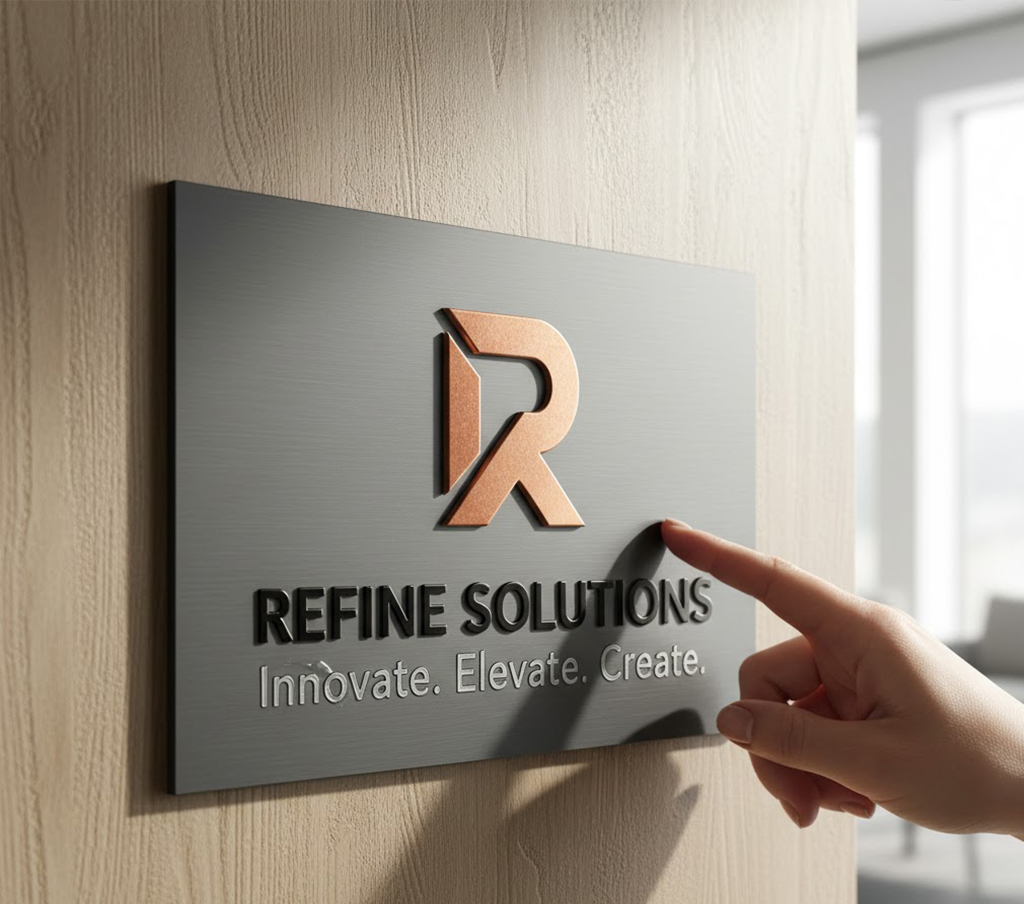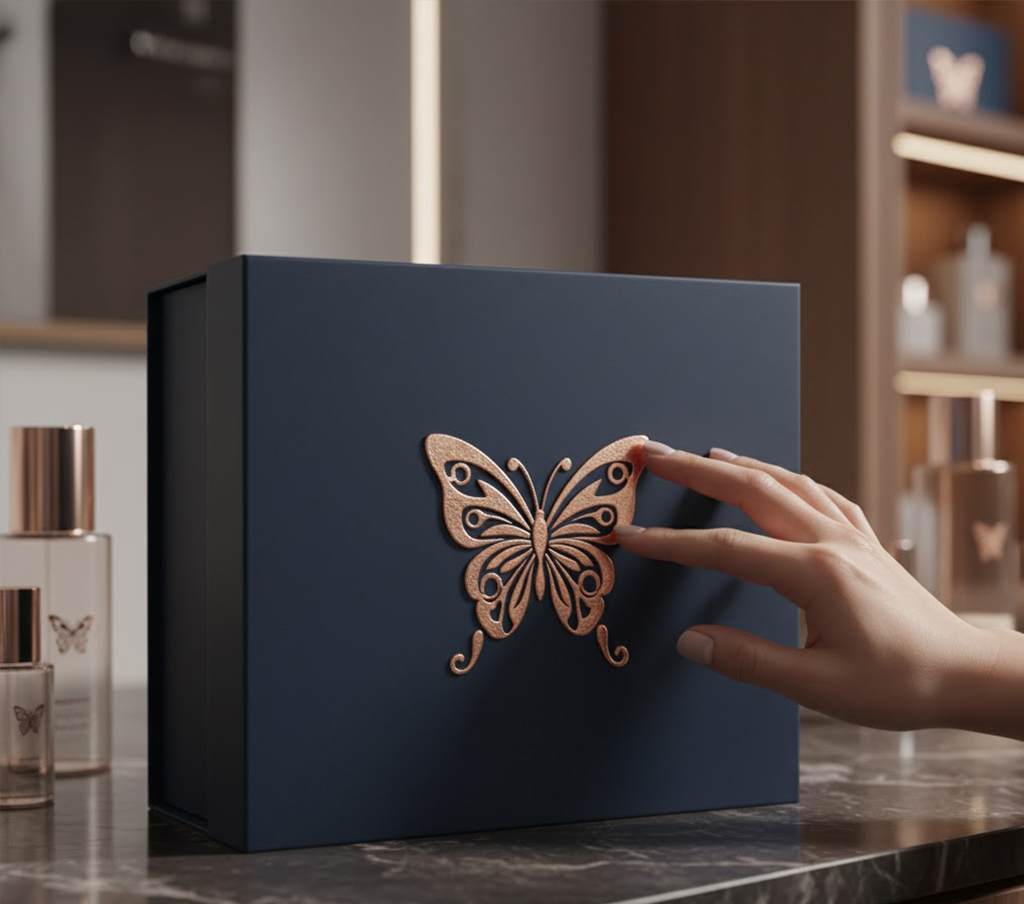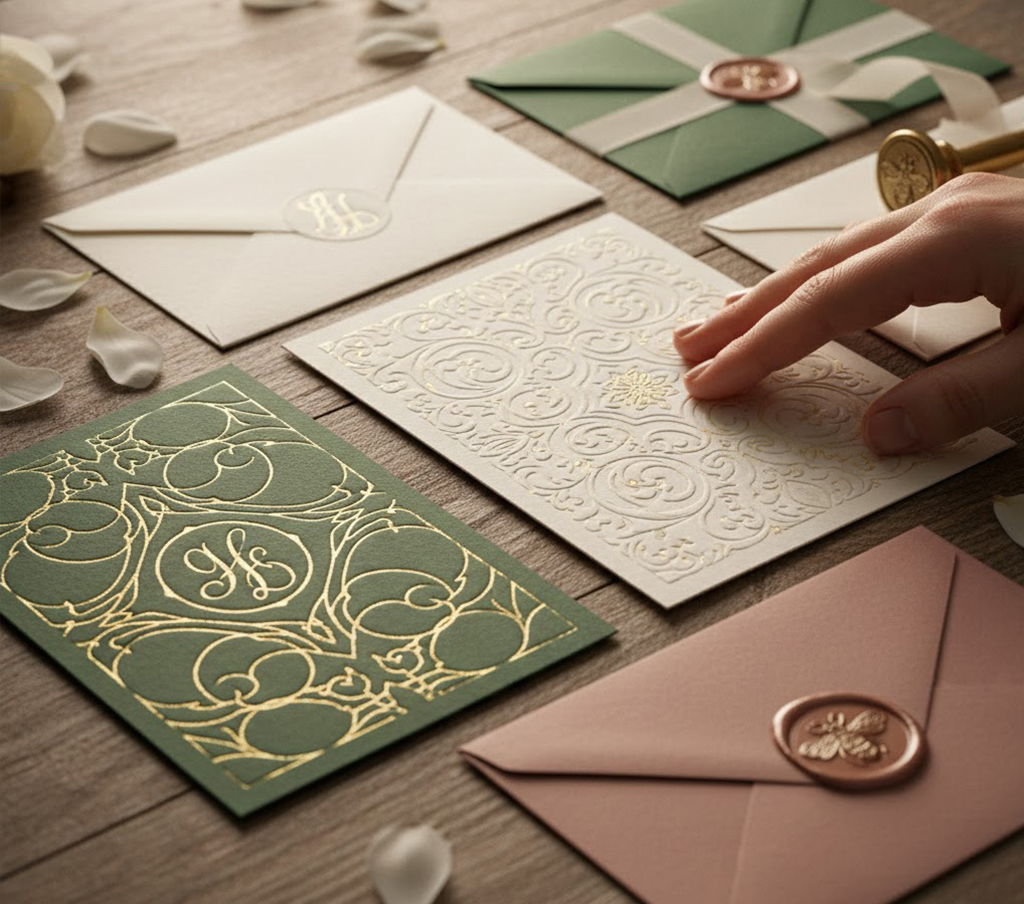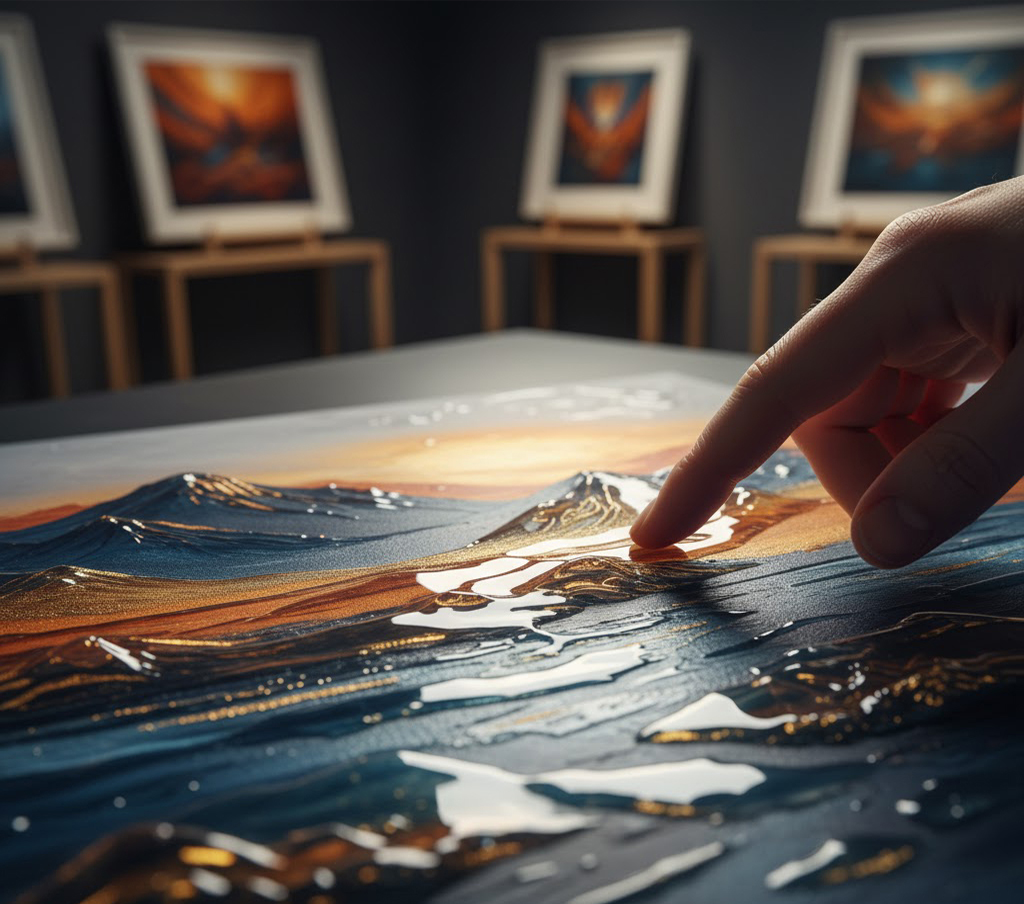English 

T: +86-180-0799-3137
E: info@refinecolor.com
E: info@refinecolor.com
9F, Building 25, Tian 'an Shenchuanggu, Fenggang Town, Dongguan 523703, China

Views: 0 Author: Refinecolor-Eason Publish Time: 2025-10-27 Origin: Site
Author: EasonLi— Senior Application Engineer, RefineColor Technology Co., Ltd
Experience: 15 years in digital printing engineering; lead developer of RefineColor’s Raised UV and IoT Printer integration projects (2018-present).
Contributors: R&D Team of RefineColor (Software Dept + Color Science Group)
Contact: www.refinecolor.com| info@refinecolor.com
"Last week,a premium wine brand client told us:"Our flat labels make $300 bottles look like $100 ones—customers can't feel the luxury"That's exactly what RefineColor's Raised UV Printing solves: We create 1.5mm raised patterns on wine labels,so when customers hold the bottle, the tactile texture instantly signals "premium".
In a digital world where most interactions are screen-based, touch has become a rare, powerful differentiator. Raised UV doesn't just"add texture"—it turns ordinary surfaces (like perfume boxes or wedding invitations) into something customers want to hold, remember, and even pay more for.


Consider the profound psychological impact of texture. It's a silent language that communicates luxury, durability, or bespoke craftsmanship long before a single word is read.
Luxury Packaging: With Raised UV,a wine brand's logo on its label lifts 1.2mm off the surface—we've seen customers run their fingers over it before even reading the brand name. One client told us:"This small texture made our $250 wine feel like a $400 bottle, and sales of that line went up 18%.' It's not just "excellence"—it's a detail that makes customers want to pay more.
Bespoke Art & Decor: Flat art,no matter how vibrant,can sometimes lack dimension. Raised UV breathes life into prints,transforming them into "gallery-grade tactile masterpieces." From 3D textured photos that capture light in new ways to custom interior panels that invite a caress,this technology—sometimes described as 3d printed relief or tactile UV layering opens new avenues for artistic expression and high-end decor.
Industrial & A.D.A. Signage: Beyond aesthetics, raised UV offers critical functionality. It's instrumental in creating compliant Braille signs and durable, raised logos on industrial equipment. This ensures the delivery of durable, functional, and compliant UV relief printing that meets stringent industry standards while enhancing product longevity and user experience.
In this segment, many users refer to our system as a precise 3d printed embosser for tactile signage production.
This transformative process is also known as UV relief printing or 3d photo printing machine technology—seamlessly combining precision layering of inks with instant UV curing to achieve unparalleled tactile effects.
This transformative process is also known as UV relief printing or 3D embossed printing machine technology — seamlessly combining precision layering of inks with instant UV curing to achieve unparalleled tactile effects.

raised uv printing for signage

raised uv printing on packaging


Achieving compelling tactile effects is more than just applying ink; it's a sophisticated interplay of material science, mechanical engineering, and intelligent software. At RefineColor, our approach to Raised UV printing,or raised print uv, is rooted in mastering these intricacies.
At its core, Raised UV printing builds physical texture by applying multiple, controlled layers of UV ink and varnish, each instantly cured by ultraviolet light. This sequential deposition and hardening process creates a robust, three-dimensional relief. However, the true artistry and engineering lie in the precision of control – managing ink viscosity, layer height, curing intensity, and print head movement to achieve consistent, high-definition results. Without this meticulous control, what could be a premium finish quickly degrades into an inconsistent, unreliable output.
Our latest embossed printer models bring new stability for consistent layering and precise tactile edges
Through years of dedicated R&D and direct engagement with industry professionals, RefineColor has meticulously addressed the prevalent challenges in achieving superior Raised UV outcomes, setting our 3D embossed printing machines apart.
Challenge 1: Blurring & Misalignment (The Registration Conundrum): A common frustration in multi-layer printing is the slight drift or blur that can compromise the sharpness of raised elements, especially on fine details or text.
Our Solution: RefineColor's uv raised printing system integrate Precision Servo-Driven systems for impeccable mechanical control of the print bed and print head. This is complemented by advanced RIP (Raster Image Processor) software profiles meticulously calibrated for our hardware. This synergy ensures perfect registration across every layer, maintaining razor-sharp edges and intricate detail, even at heights reaching 2mm. The result is a clean, defined tactile effect, free from the fuzzy edges that plague lesser systems.
Challenge 2: Cracking on Flexible Items (The Durability Paradox): Achieving a significant raised effect on materials that flex or bend, such as packaging or leather, often leads to the ink cracking or flaking over time, undermining the product's integrity.
Our Solution: We made a flexible UV ink that stays bendable even after it dries—our team tested it by folding a printed leather tag 50 times back and forth, and the raised part didn’t crack at all, even where it bent the most. A bag manufacturer now uses our system—powered by the durable uv 3d printing machine—to print foldable tote bag logos that stay intact after months of daily use.
This makes our solutions ideal for flexible packaging, leather goods, and films where durability and tactile quality must coexist
Challenge 3: Slow Speeds & "Sticky" Finishes (The Production Bottleneck): Early iterations of Raised UV printing were often hampered by slow production speeds, requiring multiple passes, and sometimes resulted in a slightly tacky or "sticky" finish that collected dust or fingerprints.
Our Solution: RefineColor addresses this with dual-head configurations (allowing simultaneous deposition of color, white, and varnish) and high-intensity UV LED arrays. This combination significantly accelerates the curing process and reduces the number of passes required, dramatically improving throughput. The high-intensity, focused UV energy ensures an instant, "rock-solid" cure, resulting in a completely dry, durable, and smooth tactile finish that resists smudges and stickiness, crucial for efficient, high-volume production.
By meticulously engineering solutions to these core challenges, RefineColor empowers businesses to consistently deliver exceptional Raised UV print quality, unlocking new possibilities for product design and market differentiation.
"uv relief printing printer isn't just a "better print method"—it's a way to charge more for work you already do. A Guangzhou packaging client used to make $2 profit per standard cosmetic box;after adding Raised UV texture,they raised prices by $5 per box (a 150% margin increase) and still won 3 new luxury brands.This isn't about "dominating niches"—it's about serving needs traditional printing can't: A wedding stationer now offers embossed invitations for $30 each (vs.$10 flat ones),and 70% of couples choose the Raised UV option because it feels"more special".By offering unparalleled tactile and visual differentiation,businesses can command premium pricing and access markets previously out of reach.
This sector thrives on exclusivity, perceived value, and an emotional connection with the product. Raised UV printing is a natural fit, elevating commonplace items into works of art.
Application: Custom wine and spirit labels that beg to be touched, intricately textured cosmetic boxes that convey opulence, or personalized wedding invitations with embossed monograms.
Why it Wins: In luxury, sensation is value. Raised UV offers a bespoke, artisanal feel that signifies quality and attention to detail. This tactile premium allows businesses to justify and achieve 3-5 times the price of standard flat printing, moving beyond simple cost-per-print to value-per-experience. It’s about selling an experience, not just a product.
Often overlooked, this sector represents a stable, high-demand market driven by regulatory compliance, durability, and functional clarity.
Application: ADA-compliant Braille signage for public spaces, durable raised logos and operational instructions on industrial equipment control panels, or tactile warning labels that resist harsh environments.
Why it Wins: This is a crucial B2B market with stringent quality and longevity requirements. Raised UV printing provides resilient, readable, and compliant solutions that are difficult to replicate with traditional methods. Our machines meet these exacting standards, positioning businesses as essential suppliers in a market segment focused on function, safety, and regulatory adherence. The consistent demand and project-based nature often lead to predictable, high-value contracts.
The modern consumer demands personalization. Raised UV printing capitalizes on this massive trend, enabling truly unique and highly profitable custom products.
Application: Creating textured phone cases that stand out, bespoke awards with embossed lettering and logos, or dynamic 3D photo prints that turn memories into tangible art pieces.
Why it Wins: This market segment thrives on innovation and the ability to offer "something different." Raised UV allows for rapid prototyping and production of unique, personalized items at a high-profit margin. It taps into the desire for individuality, enabling businesses to cater to niche interests and capitalize on viral trends with quick-turnaround, visually and tactually compelling products. This fosters strong customer loyalty and repeat business in a rapidly expanding creative economy.
The strategic deployment of Raised UV technology is not merely an investment in equipment; it's an investment in market expansion, differentiation, and long-term profitability by addressing the sensory and functional demands of diverse, high-value customer segments.
Choosing the right Raised UV printer is about matching capability with ambition. RefineColor offers a curated range of machines, each engineered to excel in specific production environments, ensuring that whether you're a boutique studio or a high-volume industrial printer, you have the ideal tool to bring tactile visions to life.
This compact yet powerful machine is the ultimate companion for creative professionals who demand uncompromising detail and versatility within a smaller footprint.
Perfect For: Graphic design studios, bespoke packaging mock-up specialists, architectural model makers, and product designers who need to rapidly prototype and produce intricate, high-quality tactile samples. It's also ideal for specialized short-run production of luxury items.
Key Feature: The Studio Pro is great for tiny, detailed work—we printed a 0.8cm floral pattern on a leather notebook cover, and you can feel every small petal clearly, no blurriness at all. A graphic designer client uses it to make custom wedding invitation embossments—she says the machine hits every fine line exactly, even on thin paper. This ensures that even the most complex designs are rendered flawlessly, elevating your creative output to a premium standard, all within a space-efficient design.
Engineered for endurance and high-volume output, the RF-6090 is built to tackle the rigors of continuous industrial production, making it a cornerstone for serious relief printing operations.
Perfect For: Signage shops handling large format Braille and tactile graphics, industrial manufacturers needing durable branding on components, and medium-to-large batch production of textured promotional items or specialty packaging.
Key Feature: The RF-6090 is built to run all day—one signage client uses it to print Braille signs for 8 hours straight, and it never slows down or jams. Its big print bed fits 6 A4-sized metal panels at once, so they used to print 50 signs a day, now they do 120—way faster, no extra staff needed. The machine's industrial-grade components ensure reliability and consistent quality over long production runs, making it the go-to solution for businesses where durability and efficiency in relief printing are paramount.
Each of these machines represents RefineColor's commitment to providing targeted, high-performance solutions that empower our partners to excel in their respective markets, turning the abstract concept of texture into tangible, profitable realities.
While cutting-edge machinery is foundational, truly mastering Raised UV printing involves a blend of technical understanding and creative application. It’s about leveraging the technology's full potential through intelligent design and strategic choices. Here, we share insights derived from years of hands-on experience, moving beyond basic operation to refined craftsmanship.
The quality of your final raised print begins with intelligent design. These tips will help you optimize your files for superior tactile results.
Tip 1: Use Vector Masks for Sharp, Defined Edges in Your Relief Layer. Raster images can introduce subtle pixelation, leading to slightly soft or undefined edges in your raised elements. By using crisp vector masks to define the areas for your relief layers, you ensure that every edge, curve, and fine line of your tactile design is rendered with absolute precision and clarity. This is crucial for elements like fine text, intricate logos, or geometric patterns that demand razor-sharp definition.
Tip 2: Combine Varnish + Raised Ink for Stunning Contrast. Don't limit yourself to just one type of relief. A sophisticated technique involves applying a high-gloss varnish layer over a matte raised texture, or vice-versa. For instance, a matte raised logo on a glossy background, or a gloss varnish pattern lifting off a matte raised texture, creates a powerful visual and tactile contrast that significantly enhances the perceived luxury and complexity of the print. Experiment with different combinations to achieve unique, high-impact finishes.
Tip 3: Tapering Edges for a Smoother, More Integrated Embossed Feel. While sharp edges have their place, sometimes a more organic, integrated embossed look is desired, mimicking traditional embossing. Our advanced RIP software allows for the "tapering" of edges in your relief layers. This feature gradually reduces the height of the raised element at its perimeter, creating a gentle slope that blends more seamlessly into the substrate. The result is a smoother, more refined tactile transition that enhances the premium feel and ergonomic quality of the final product.
Understanding the distinction between these two tactile enhancement methods is crucial for making informed production decisions. While both create a raised effect, their underlying processes, costs, and flexibility diverge significantly.
Feature | Raised UV Printing | Mechanical Embossing |
Process | Ink layering + UV curing | Heat + pressure |
Cost | Low for small batches | High setup cost (for dies) |
Flexibility | Digital, customizable, variable data | Fixed mold (dies) |
Key Takeaway: The most significant advantage of Raised UV printing lies in its digital nature. It completely "eliminates the cost and time of creating molds/dies," which are essential and expensive for traditional mechanical embossing. This makes Raised UV inherently more agile and cost-effective for short runs, prototyping, and variable data printing—each item can be unique without incurring additional setup costs. In today's market, where "instant customization" and rapid iteration are paramount, Raised UV printing is perfectly positioned to meet evolving client demands with unparalleled speed and flexibility. It's not just a “different process”—it’s a cost-saver for small batches. Traditional embossing needs $500 molds per design (only worth it for 1,000+ units). With Raised UV,a bakery ordered 50 custom embossed boxes for a wedding (no mold fee) and paid just $3 per box—this flexibility is why 80% of our small-studio clients say Raised UV changed their business.
Mistake 1: Chasing extreme height over durability.
Many new users push for 3mm+ raised effects, but this often leads to incomplete curing—our test team found that 2mm is the sweet spot: it’s noticeable, passes 50+ fold tests, and never peels.
Mistake 2: Ignoring substrate compatibility.
Printing on leather without adhesion promoters causes the raised ink to crack in 1 month. We provide custom promoter protocols for leather/plastics—one client avoided a $5,000 reprint by following this step.
Mistake 3: Skipping vector masks for fine text.
Raster images lead to blurry edges on small logos (e.g., 2cm brand initials). Using vector masks ensures every edge stays sharp, even on 0.5mm thin raised text."
Navigating the nuances of Raised UV printing often brings forth specific technical questions. We believe in empowering our partners with clear, accurate information and robust support. Here are answers to some of the most frequently asked questions, reflecting our commitment to transparent and comprehensive guidance.
A: While some marketing efforts might highlight extreme heights, our focus is on consistent quality and durability. We guarantee durable, sharp, and perfectly cured results up to 2mm. This height comfortably covers approximately 99% of all commercial applications requiring a noticeable, high-quality tactile effect. Pushing beyond this often compromises cure, adhesion, and edge definition, leading to an inferior final product. Our aim is reliable excellence.
A: We test durability the way customers use products—no just lab tests. Our team did 2 real-world checks: 1) Scratched the raised pattern 20 times with a fingernail (simulating pocket/handbag friction)—no marks or peeling. 2) Soaked a printed phone case in water for 24 hours (simulating spills)—the texture stayed intact.For industrial use (e.g., equipment labels), the print passes cross-hatch tests with a 98% adhesion rate—one factory client has used our printed control panels for 2 years, and the raised logos still look new.".
A: One of the greatest strengths of Raised UV technology is its versatility across substrates. Our machines can print on virtually any material, including glass, metals, various plastics (acrylic, PVC), leather, wood, and a wide range of flexible films and foils. For optimal adhesion on particularly challenging surfaces, we provide specific adhesion promoter protocols and guidance, ensuring consistent, high-quality results across diverse applications.
Q: What support do you offer partners?
A: At RefineColor, we see ourselves as more than just a supplier; we are a dedicated partner in your success. We provide complete training on machine operation, maintenance, and software utilization. This includes hands-on sessions and comprehensive documentation. Beyond technical training, we offer marketing materials to help you effectively communicate the value proposition of Raised UV printing to your clients. Crucially, our technical support extends to ink profiles and design-to-print workflow optimization, ensuring you achieve the best possible results. We are here to guide you from initial setup through advanced applications, fostering a relationship built on mutual growth and innovation.
A: For orders under 500 units, Raised UV is 30-40% cheaper. Hot stamping needs $300-$800 dies (one-time cost), so a 100-unit order of leather tags would cost $5 each (die + labor). With Raised UV, the same 100 tags cost $3 each (no die fee)—perfect for small brands or custom projects.
Raised UV Printing Explained: 3D Texture, Tactile Design, and High-Profit Applications
Stop Losing Profit to Old Decal Methods — Switch to a UV Ceramic Decal Printer
UV Metal Printing Machine: Turn Blank Metal into High-Margin Products
UV leather printer: Stop the price war and start selling "touch" and "unique value”
1 machine for printing mugs , 2 Profit Modes, N-Times the Profit
High-Resolution Acrylic Printer for Custom Designs And Artwork